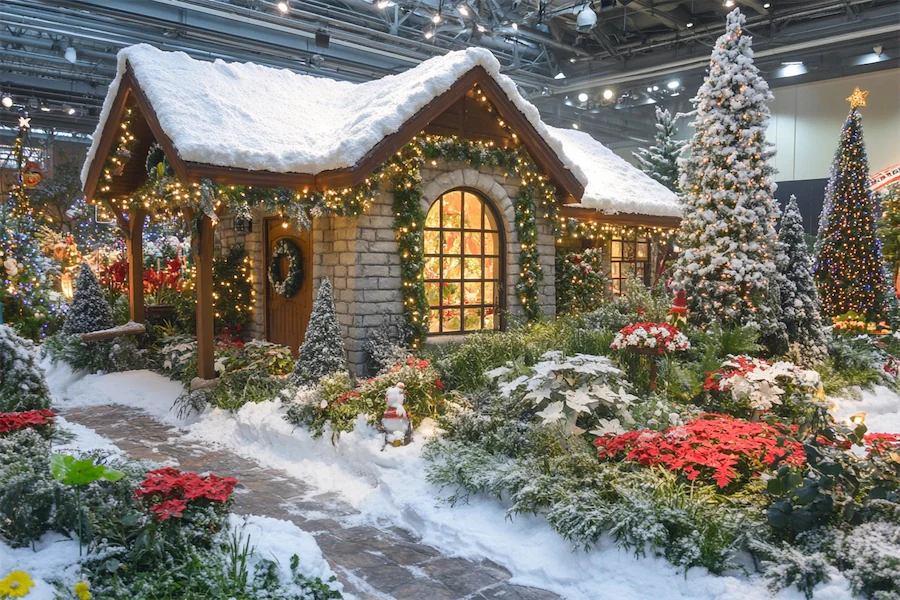A Winter Wonderland Garden transforms your outdoor space into a captivating landscape that highlights the serene beauty of the colder months. By thoughtfully selecting plants, incorporating structural elements, and utilizing lighting, you can create a garden that offers visual interest and tranquility throughout winter.
Key Features of a Winter Wonderland Garden
- Evergreen Foliage: Incorporating evergreen plants such as Buxus (boxwood), Taxus (yew), and Ilex (holly) provides structure and color during winter. These plants maintain their foliage year-round, offering consistent greenery.
- Bark and Stem Interest: Selecting trees and shrubs with distinctive bark or stems, like Betula (birch) with its white bark or Cornus (dogwood) with vibrant red or yellow stems, adds visual appeal against a snowy backdrop.
- Winter-Blooming Plants: Incorporating plants that flower in winter, such as Hellebores (Christmas rose) and Hamamelis (witch hazel), introduces subtle color and fragrance during the colder months.
- Structural Elements: Features like pergolas, arches, and trellises add architectural interest and can support climbing plants, enhancing the garden’s depth and character.
- Lighting: Installing soft, ambient lighting along pathways and around key features creates a warm and inviting atmosphere, making the garden enjoyable even during early evenings.
Considerations When Designing a Winter Wonderland Garden
- Plant Selection: Choose plants that are hardy in your climate zone to ensure they withstand winter conditions. Consulting local nurseries can provide guidance on suitable species.
- Maintenance: Regularly remove snow from branches of evergreens to prevent damage. Prune deciduous trees and shrubs during dormancy to promote healthy growth in spring.
- Wildlife Support: Incorporate bird feeders and water sources to attract and support wildlife, adding liveliness to the garden during the quieter months.
Conclusion
Creating a Winter Wonderland Garden allows you to enjoy the beauty of your outdoor space year-round. By focusing on structural elements, selecting plants with winter interest, and incorporating thoughtful lighting, you can design a garden that remains captivating even in the depths of winter.
